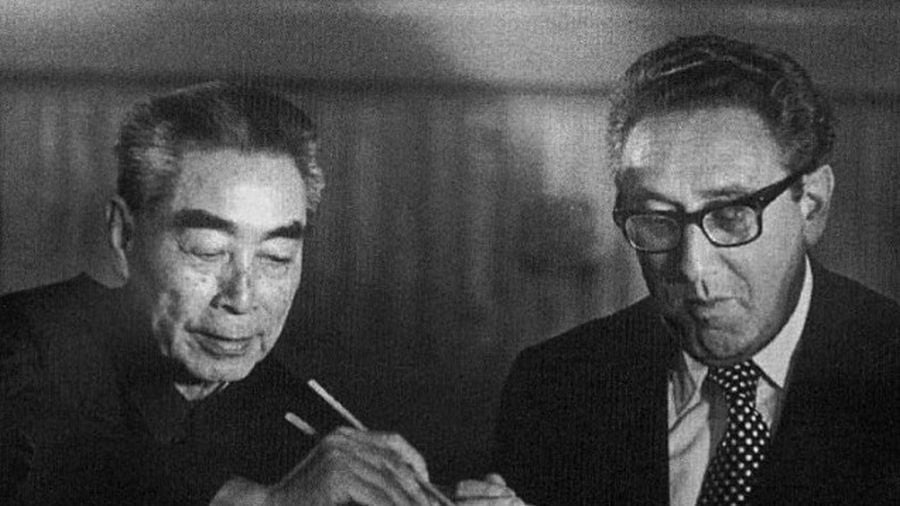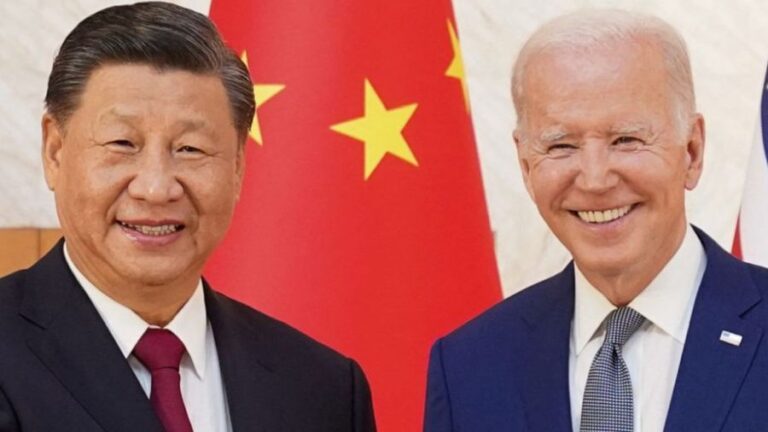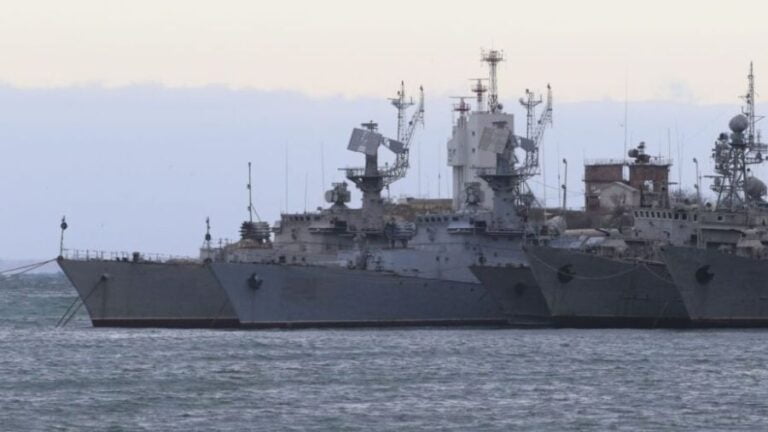On the 50th Anniversary of Henry Kissinger’s Visit to China
In the relations between the two leading world powers (the USA and China), which are developing in a complex manner, a remarkable event took place on July 9: a video conference dedicated to the 50th anniversary of the secret visit made to Beijing by Henry Kissinger, who worked in President Nixon’s administration as his National Security Adviser and Secretary of State.
This visit itself became an important stage in the so-called “ping-pong diplomacy” that went back and forth during 1971; during that, while exchanging athletic delegations to each other’s territories secret visits were made by government agency employees. This occurred in the absence of diplomatic relations, the failures of the previous 15-year negotiation process to establish them, and Beijing’s public tight control over the regime that banned American politicians from visiting China who were in any way connected with the US establishment.
This “ping-pong diplomacy” ended when, on February 28, 1972, the so-called Shanghai Communiqué was signed (with Mao Zedong and Zhou Enlai on the Chinese side and Richard Nixon and Henry Kissinger on the American side). That was a breakthrough moment, and not only in the long process of developing bilateral relations, but also in the nature of how the global cold war was developing, and this predetermined its outcome to a significant degree.
Signing the Shanghai Communiqué became not only a symbol of a personal success scored by Secretary of State Henry Kissinger, but also of those (avoiding excessive publicity) forces that “incorporated” him into Richard Nixon’s administration in January 1969, after the latter had just won the election. Kissinger was the one who was instructed to take advantage of the fact that Soviet-Chinese relations had sharply deteriorated, something which took shape back in the mid-1950s, and attract one party of the recent “brothers forever” to his side. This was done with the aim of radically changing the balance of power among the main opposing parties in the Cold War.
One of several basic provisions outlined in the Shanghai Communiqué was Washington’s recognition of the One China policy, in which Taiwan plays an integral part. This thesis resurfaced seven years later in the Communiqué, which established full-fledged diplomatic relations between the United States and China.
It is worth noting that three months before (at the end of October 1971), the US was among those 35 countries that had voted against transferring the UN seat held by Taiwan (“the Republic of China”) to China. Since the corresponding resolution was approved anyway (with 76 votes, including that cast by the USSR), this allowed, first of all, Washington to demonstrate its “uncompromising political stance toward its principles”, and three months later it permitted it (along with Beijing) to avoid discussing issues that were “no longer relevant”.
With the adoption of the Shanghai Communiqué, the period of Washington starting to give up one of Asia’s most loyal American allies began, and this was capped off in 1979 (at the time diplomatic relations with China were established) when the US-ROC mutual defense treaty was terminated. This was the price that had to be paid in order to achieve much more significant goals.
It is worth reiterating that the United States held on to considerable leeway with regard to the situation in the Taiwan Strait by adopting a special Taiwan Relations Act in 1979, which China considers to have no international legal significance. For Washington, TRA-1979 (together with a number of “Reagan’s decrees”) serves as the basis for providing comprehensive (including the sale of “defensive” weapons) support for Taiwan. That is the main obstacle for Beijing in terms of annexing the last “rebel” territory.
This is the historical background for the July 9 conference. It is worth pointing out the noteworthiness of its representative format, something which is fully consistent with the current state of relations between the world’s two leading powers.
On the Chinese side, it was opened by Vice President of the People’s Republic of China Wang Qishan, who is one of the main assistants to its leader, Xi Jinping, in the country’s current party and state leadership. That is to say, he is one of the country’s top official figures. It was Wang Qishan who signed the US-China so-called Phase 1 trade deal on behalf of China in January 2020; this launched the process of addressing (the very serious) problems in bilateral trade and economic relations.
While on behalf of the American side, the same (by now 98-year-old) Henry Kissinger gave an opening speech. A person who is not only just a private individual nowadays, but even hardly one who represents anyone else in the American establishment. This fact contains a fairly evident message from Washington for Beijing: everything that happened 50 years ago is mainly of historical interest in terms of the countries’ current bilateral relations.
The speeches given by both distinguished guests at the conference were quite general and could be characterized, as they say, as “befitting the occasion”. Both believe that certain circumstances exist now that bear a resemblance to those of 50 years ago. Back then, those prompted the parties involved to address establishing US-Chinese relations.
As a commentary, it is worth highlighting that during this time the picture of the world’s political situation, and the positions held in it by both countries, have undergone fundamental changes. The main change like this was that currently China has taken the place of the United States’ main geopolitical opponent, which was occupied by the USSR 50 years ago. Therefore, the status and actual role played by Taiwan (something mentioned by Henry Kissinger as the main issue that he discussed with China’s leadership 50 years ago) has taken on a completely different nature. For the United States today, Taiwan does not represent a relatively minor “victim” in the bigger game, but is one of the main tools it uses in the fight against its new geopolitical opponent. In Washington’s current policy towards Taiwan, there are obviously manifested attempts to return, if not to a complete degree then in a very significant way, to the pre-1971 state of affairs. In particular, this means imparting US-Taiwanese relations with a “regular intergovernmental” format.
The creeping nature of this process has been more or less regularly monitored by NEO. Among the latest events that attest to how this process is developing, one suspicious incident that occurred on July 7 drew attention to itself, when the Taiwanese flag appeared (and then disappeared) in a White House tweet listing the “countries” that are being assisted in the fight against COVID-19.
During a scheduled press conference held the next day by White House Press Secretary Jen Psaki (mostly dedicated to events in Afghanistan and Haiti) the above-mentioned fact was described as “an accidental error made by the team in charge of scheduling”. On the one hand, this also reaffirmed Washington’s respect for the One China policy, but on the other hand its adherence to a policy adopted towards Taiwan as per the provisions in TRA-1979, as well as other intra-American acts.
For some reason, these “bloopers” on a serious topic have become more frequent. A month earlier, Yoshihide Suga, the prime minister of one key US ally in Asia, during the speech he gave in parliament on the topic of COVID – one that is becoming more acute in Japan among the “countries” worthy of emulation in the fight against this infection, mentioned Taiwan. Of course, this “oversight” was not ignored by Beijing.
In addition, they drew attention to the current understanding of the Taiwan problem held by Kurt Campbell (who has always kept in close contact with Henry Kissinger), who is one of the architects of the US policy in the Asia-Pacific region. During the period 2009-2013, Campbell served as the Assistant Secretary of State for East Asian and Pacific Affairs. He is just a private individual nowadays, yet he holds great authority in the current administration. The link here allows people to familiarize themselves with his general, modern-day views on China’s foreign policy.
By all appearances, Kurt Campbell remains a supporter of the policy of “strategic ambiguity” in relations with Beijing and Taipei – something which was laid down 50 years ago by his “ideological father”. Once again, however, it is worth noting the recent strengthening in the US policy of those who support taking a “hard line” towards China in general, and in the particular on the Taiwan issue (something that is critically important for Beijing). Since autumn last year, many distinguishable voices have rung out about the need to move towards “strategic clarity” in relations with Taiwan.
Finally, let’s turn our attention to the attempts to reconstruct the games from 50 years ago in today’s environment. But today the role of “China 1972” has been allotted to Russia, for which Ukraine may turn out to be similar to “Taiwan”. Despite the fact that the leadership of Ukraine seems to have “been driven mad” completely (presuming it was ever sane to begin with): trying to flirt with the main geopolitical opponent of its own (absolute) owner, in conditions involving the sharp exacerbation of relations between them: that is something that takes a lot to think up.







